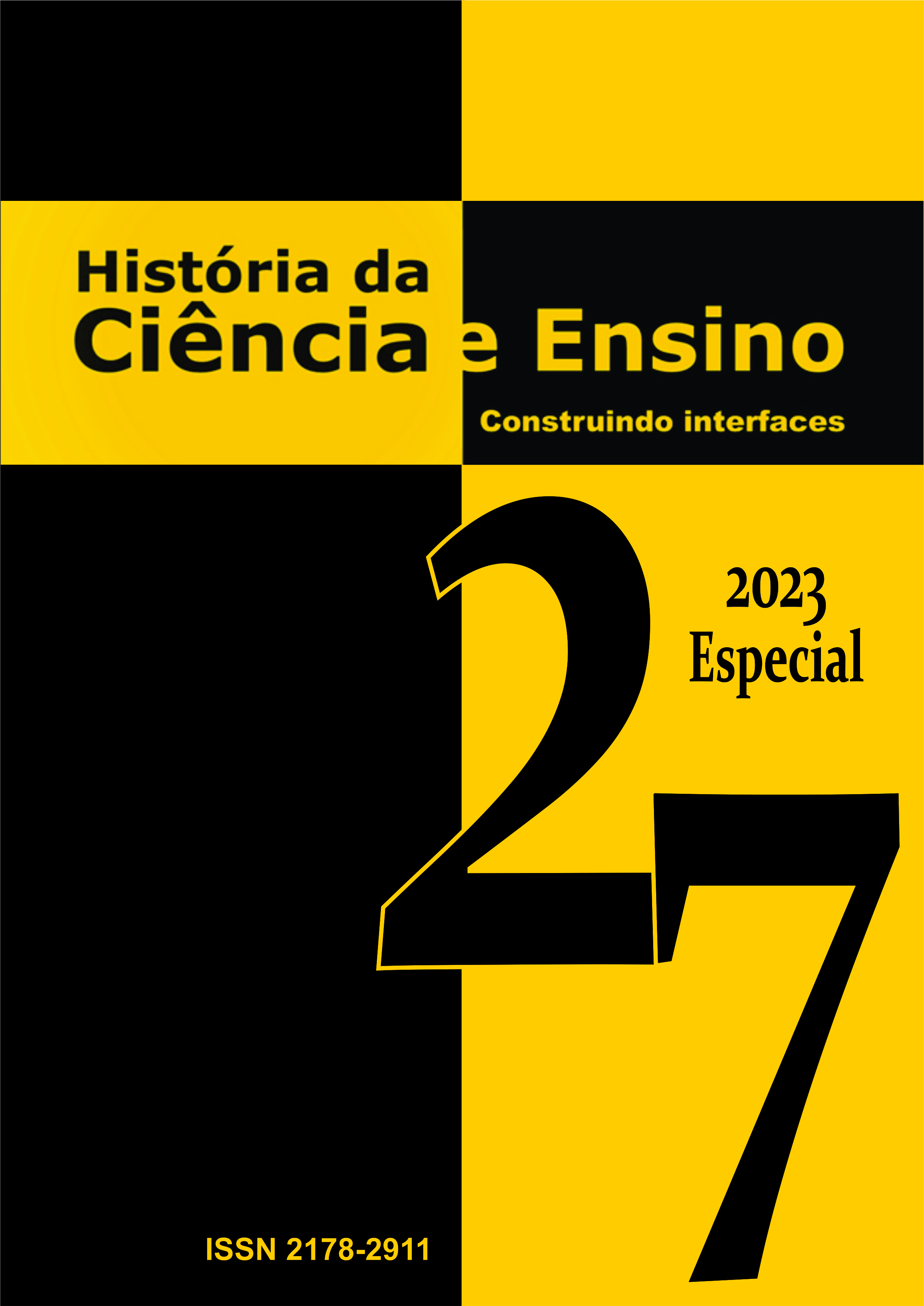El proyecto de divulgación científica en Michael Faraday y las conferencias
DOI:
https://doi.org/10.23925/2178-2911.2023v23espp282-298Resumen
Este estudio apuntó a las principales conexiones vinculadas a los mecanismos políticos y económicos de la Inglaterra de finales del siglo XVIII que no había logrado reestructurarse debido a una industrialización intempestiva. Tales suposiciones tendrían importantes consecuencias en los primeros treinta años del siglo XIX. Estas presiones fueron tales que la sociedad londinense en particular tuvo que modernizarse. Estamos situados en este período donde la popularización de la ciencia y las conexiones de su difusión en la vida cotidiana del siglo XIX se produjeron debido a desarrollos sociales, políticos y científicos. Básicamente, la ciencia utilitaria y la filantropía científica, que sugirieron priorizar un punto crucial, en el contexto. La propuesta de Michael Faraday (1791-1867) para la difusión de la ciencia se basó en una argumentación que contenía naturalmente supuestos metafísicos, complejo método experimental en sí, sin embargo, elucidativo y adecuado a los aspectos inherentes al estudio de la materia y sus fuerzas. La propuesta de divulgación científica se basó en la enseñanza y la divulgación del conocimiento científico. Los temas surgidos de las investigaciones formales de Michael Faraday, o mejor dicho, de las investigaciones vividas en el laboratorio, fueron difundidos en lecciones públicas con un lenguaje de alegorías, de estudios encaminados al éxito de la ciencia y la tecnología, haciendo el experimento accesible a la comprensión de el profano, para demostrar y recrear un ambiente atractivo, bastante agradable, a diferencia del rigor "científico" de los laboratorios. Reproducir experimentos, difundirlos a jóvenes entre 15 - 20 años, reconstruyendo experiencias, con profundización teórica para estimular, principalmente, a despertar en los jóvenes la voluntad de aprender a "entrenar la mente", proceso también educativo.
Citas
BERMAN, Morris. Social Change and Scientific Organization, 1799 – 1844. Ithaca, New York: Heinemann Educational Books and Cornell University Press, 1978.
DAY, Peter, (org), The Philosopher’s Tree: Michael Faraday’s life and work in his own words. London, Bristol and Philadelphia (PA): Institute of Physics, 1999.
FARADAY, Michael. Experimental Researches in Chemistry and Physics. Londres, Taylor and Francis, 1859.
FARADAY, Michael. Faraday, a história química da vela: as forças da matéria. Trad. Brasileira de Vera Ribeiro. Rio de Janeiro: Contraponto, 2003.
FOOTE, George A. “Science and Its functions in Early Nineteenth Century England”. OSÍRIS 11, 1954, p.438-454. Chicago: The University of Chicago Press. https://www.jstor.org/stable/301681
GOODING, David. “A Convergence of Opinion on the Divergence of Lines: Faraday and Thomson’s discussion of Diamagnetism”. ISIS, 36:243-259.
GOODING, David. “Mathematics and Method in Faraday’s Experiments. PHYSIS XXIX: 121-147.
GOODING, David. “Empiricism in Practice: Teleology, Economy, and Observation in Faraday’s Physics”, ISIS: 47-67.
HAMILTON, J. Faraday: The Life. London, Harper Collins Publishers, 2002.
MERTON, Robert K. “Science, Tecnology and Society in Seventeenth Century England”. ISIS, 1980 (No. 259), p. 589.
NIVEN, W.D. (ed). The Scientific Papers of James Clerk Maxwell. New York: Dover, 1965. Vol. II, p. 505.
REIS. J.B.A. dos. “A Teoria Magnética de Michael Faraday: Experimentos e Idéias sobre o Diamagnetismo”. Dissertação de Mestrado, São Paulo, Pontifícia Universidade Católica de São Paulo, 2000.
REIS. J.B.A. dos. ” A Arquitetura Metodológica em Michael Faraday. Tese de Doutorado São Paulo, Pontifícia Universidade Católica de São Paulo, 2006.
THOMAS, John Meurig. Michael Faraday and the Royal Institution: the genius of man and place. New York: Milton Park, 1991.
TURNER, Frank M. “Public Science in Britain, 1880-1919”. ISIS. Vol, pp. 589-608 (20): The University of Chicago Press. https://www.jstor.org/stable/230502


